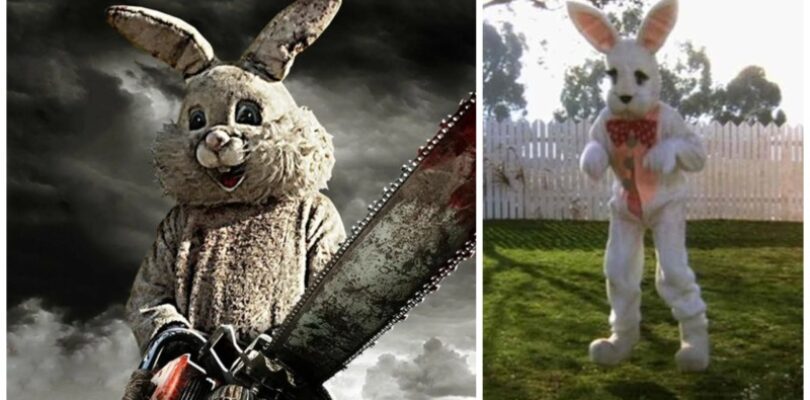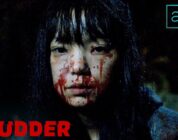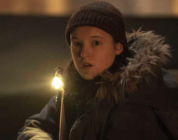Holidays and horror cinema go together like … well, Halloween and trick-or-treat candy, or Christmas and stocking stuffers. Since the likes of 1974’s Black Christmas and 1978’s Halloween codified the concept of attaching horror scripts–so often slasher movies, in this particular period–to popular American holidays, there’s been practically no red letter day out there that hasn’t been exploited by a low-budget horror filmmaker at one point or another. Mother’s Day? That’s got a horror flick. April Fool’s Day? Yep, horror movie. Even Presidents’ Day inspired a horror film at one point.
With the more prominent American holidays, you can take your pick from dozens or even hundreds of options. Christmas is perhaps the undisputed king of holiday horror, yielding so many films on an annual basis since the 1980s that Paste’s own Christmas horror movie list is now 25 entries long. Halloween is also, for obvious reasons, closely tied to horror cinema, well beyond John Carpenter’s iconic classic. Even Thanksgiving has a fairly rich horror movie back catalog, including Eli Roth’s high-profile, (relatively) big budget Thanksgiving in 2023, which has an impending sequel arriving this fall. But the major holiday with a curious lack of genuinely high-profile, effective and enduring horror classics? That would be Easter. Despite no shortage of zero-budget films involving men in bunny suits, Easter is still wanting for a great, modern horror classic–surely there must be some filmmaker out there willing to make it happen?
Until that moment, though, here’s a brief rundown of the world of Easter horror cinema as it exists today.
Easter’s Horror Roots
Thematically, it feels like Easter should be almost perfect for horror genre exploitation. The Christian roots of the holiday are undeniably grisly: It begins with the gory public execution of Jesus of Nazareth, material that has been depicted dramatically (to mega box office results) in the likes of The Passion of the Christ. It then obviously involves a physical resurrection on the part of Jesus, which lends itself to an obvious zombie metaphor: What is the resurrected Jesus if not some kind of spiritually empowered zombie?
Likewise, the teachings and ritual practices established by Jesus have a certain sheen of horror symbolism to them when taken both literally and metaphorically. He instructed his followers, after all, to eat of his flesh in symbolic means via bread and wine, but Catholic dogma such as the concept of transubstantiation stresses that in the process of Communion and blessing, that wine and wafer is transformed into the literal flesh and blood of the savior. What can the result be called, other than ritual cannibalism? It’s yet another obvious angle for horror filmmakers to key in on, if they’re depicting the Easter holiday from a religious horror angle.
A few of the most fleshed-out (sorry) “Easter horror” concepts to date have gone this route. It’s not a film, but on the small screen, Mike Flanagan’s Netflix miniseries Midnight Mass does culminate on Easter, with a storyline involving the supernatural corruption that a vampire wreaks in a small island community after the town’s unfortunately genre-blind residents and hometown priest mistake that vampire for a biblical angel. The actual Easter holiday, however, is not particularly tied to the plot of Midnight Mass.
Likewise, 1999’s Resurrection is one of the few serious horror films that is legitimately and unabashedly based around the Easter window, thematically tying its familiar police-chasing-a-serial-killer story to the themes of Christ’s resurrection. Specifically, the cops here are hunting a madman who is attempting to recreate the “body of Christ” by stitching together the stolen limbs and body parts of his victims, ‘ala the jigsaw woman of classic 1982 trash slasher Pieces. It’s a rather audacious plotline, although the film itself suffers from the fact that it’s impossible to miss its blatant attempts at recreating/ripping off 1995’s Se7en, with Highlander director Russell Mulcahy trying on his best (not very good) David Fincher impersonation while throwing another leading role to his muse, Christopher Lambert. To date, this straight-to-DVD affair is still among the most high-profile, legitimate Easter-themed horror films released in the U.S., which is saying something.
Other American horror flicks have been more coincidentally set during the Easter season in a way that isn’t directly tied to the holiday itself, such as 1988’s Critters 2, which sees the miniscule, spherical, puff-ball-with-teeth aliens returning to menace a small town over what appears to be Easter weekend. There’s an Easter egg hunt in this one, and even an Easter Bunny who is at one point killed by the Critters, crashing through the stained glass windows of a church service to die in front of the congregation, but it’s all just set dressing rather than an important part of what passes for narrative in a Critters sequel.
Killer Rabbits Galore
If there’s one corner of the Easter-appropriate horror world that has been done in volume, and done to death and beyond, it’s anything involving
A. Killer rabbits (animals) or supernatural Easter Bunnies, or
B. Guys in rabbit suits who kill people.
This can range from Monty Python-style tiny killer rabbit hijinks, to mutated giant monster bunnies, to half-man, half-rabbit hybrids, to conventional slasher fare that just so happens to involve a dollar store bunny costume. You could consider 1972’s Night of the Lepus to be a progenitor in this niche–it’s a story about a town under siege by giant, mutated rabbits, essentially cribbing its style from the atomic era “giant irradiated monster” movies of 15 years earlier. Today it stands out for the unintentional humor of its forced perspective special FX, which for the most part simply superimposed swarms of actual, adorable rabbits against miniature sets while occasionally splashing a little red dye around their mouths in an attempt to make them appear vicious. Suffice to say, it all feels a bit more fluffy than perilous.
In truth, most of the rabbit-based Easter horror instead leans into the absurdism of the concept and uses the inherent stupidity of the premise to produce either horror comedies or “bad on purpose,” Z-grade schlock. This is true of so many of the more recent attempts at Easter “horror,” which typically feel as if they’re the result of a pun title being written first, and then the barebones outline of a film reverse engineered to fit it. See: The likes of Finnish slasher comedy Bunny the Killer Thing, jackalope horror comedy Easter Bloody Easter, jaw-droppingly horrendous CGI bunny monster vehicle Beaster Day: Here Comes Peter Cottonhell, or either of the multiple films that use the portmanteau “Rottentail” in their titles. The latter is particularly grating–2019’s Rottentail is like an Easter horror movie by way of Troma, featuring a half-man, half bunny science experiment turned into a foul-mouthed, wisecracking super soldier in the mold of The Toxic Avenger. This is the kind of horror cinema that is only being sought out by the most inveterate genre junkies, the cinematic equivalent of bathtub gin.
There are still more inspirations for cheap, independent Easter horror fare, one of the most prominent being the Northern Virginia urban legend of the Bunny Man, a folk boogeyman who stems from a series of police reports in 1970 in which people described having been menaced by a figure in a bunny costume. Given the popularity of urban legends as a basis for cheap independent horror cinema (public domain, baby), it should come as no surprise that there’s a veritable fistful–possibly dozens–of films related to the Bunny Man today, none of which should be anyone’s priority to see. Ditto the likes of 2024’s Easter Evil, which appears to be … a colorful, zero budget John Waters Easter riff? Well, at least that’s a less utilized niche, I’ll give them that.
To date, the one and only largely effective piece of Easter-themed horror I’ve encountered isn’t actually a feature film at all, but rather a short entry in a larger horror anthology. 2016’s Holidays isn’t an anthology of particular note–it doesn’t make our master list of the best horror anthology movies–but its lauded Easter segment does contain the best take I’ve seen to date on the idea of presenting the Easter Bunny as a figure of supernatural horror. In this short, a young girl is warned against witnessing the Easter Bunny in person, but is caught out of bed when the creature–looking like something out of Guillermo del Toro’s nightmares–visits the house and begins manifesting eggs and baby chicks out of gross slits in its hands. The short makes the inspired choice of tying the Easter Bunny’s mythology right into the Christ story itself, turning its rabbit into not just a bunny-man hybrid, but one that has seemingly been gruesomely crucified, still bearing its open wounds and thorny crown. Suffice to say, this glistening monstrosity manages to be squishy, gross and ideologically transgressive enough to be genuinely disturbing. To date, it’s the closest thing we have to a unit of genuinely effective Easter horror.
But still, given the couple of millennia that Christians have been celebrating this holiday, can’t we expect a little bit more? If another Christian holiday in the form of Christmas can continue to inspire at least halfway decent horror entries on an annual basis, with occasional classics like Krampus sprinkled in, then surely we can get at least one halfway decent horror standard that can serve as a yearly Easter touchstone? Even St. Patrick’s Day has the Leprechaun series, for god’s sake. This Easter, I want to find a new, bloody horror classic waiting for me in my basket.
Jim Vorel is Paste’s Movies editor and resident genre geek. You can follow him on Twitter or on Bluesky for more film writing.





